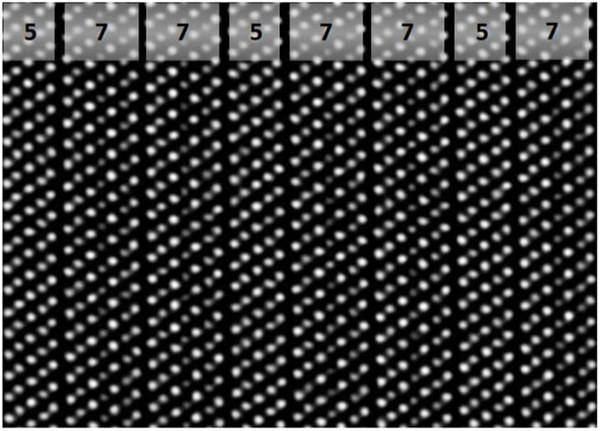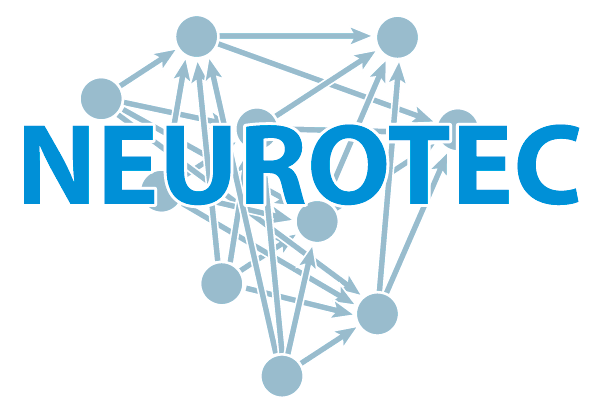WP1 Material development for memristive cells
Memristive cells are novel devices with their own "memory". They are considered to play an important role in the energy-efficient implementation of neuromorphic functions. Non-volatile memristive cells enable the realization of energy-efficient computing-in-memory (CIM) concepts, in which the strict separation of arithmetic-logic unit and memory is removed, and serve as artificial synapses in neuromorphic circuits. Volatile threshold switches can be used as artificial neurons. Memristive devices have been intensively researched since the turn of the millennium, initially for embedded memories but now increasingly for use in CIM and associative memories (CAM - content addressable memory). The necessary simultaneous optimization and further development of memristive cells and neuromorphic circuit concepts is taken into account by NEUROTEC in its project structure.
In the field of material development for memristive cells, WP1 is deliberately focusing on two areas.
On the one hand, the maturation of established material systems up to co-integration on functional neuromorphic chips is advanced. The focus of optimization here is on oxide-based valence change cells (VCM - valence change mechanism) [10.3389/fnins.2021.661856][10.3389/fnins.2021.661261] and electrochemical metallization cells (ECM - electrochemical metallization cells) [10.1002/adfm.202111242] as well as cells made of phase change materials (PCM - phase change mechanism) [10.1002/aelm.202100974].



Second, novel memristive cells based on 2D materials including transfer to CMOS circuits are explored. For this, controlled layer growth and defined transfer processes [10.1109/SNW51795.2021.00041] (together with AP2) are investigated and developed in scalable methods.
The optimization of the layer growth and the material stacks of the memristive cells is done in WP1 specifically with the intention of a later transfer to industrial production. This means that the processes are compatible with current semiconductor technology (CMOS - complementary metal oxide semiconductor) in terms of temperature budget and scalability to wafer diameters of 300 mm. For the filamentary switching VCM and ECM cells based on transition metal oxides, chemical and physical vapor phase deposition methods such as atomic layer deposition (ALD) and sputtering are used. The structuring of the devices, which are a few-ten nanometers small, is carried out in a 1000 m2 clean room on the Jülich campus [www.fz-juelich.de/hnf] and at RWTH [cmnt.rwth-aachen.de] using modern electron beam lithography. For the growth of Al/(Pr,Ca)MnO3 bilayers used in area-switched VCM cells, a pulsed laser deposition system for substrates up to 10 cm in diameter was procured in the first phase of the project. In the K2 project, the PGI-7/FZJ and Surface Technology & Systems GmbH are also conducting joint R&D activities on it. The optimization of stoichiometry and dimension controlled PCM systems and selective growth on patterned silicon substrates is done by molecular beam epitaxy (MBE) and metal organic chemical vapor deposition (MOCVD). The focus of WP1 is to develop a deeper physical understanding of the switching and failure mechanisms (with WP3) with the goal of achieving better reliability), comprehensive electrical characterization (with WP4), integration into larger blocks and networks (with WP2), and co-integration into CMOS circuits in the DP project. These chips will demonstrate key functionalities of neuromorphic computing with memristive cells (with WP5 and WP6).
Chemical vapor deposition (CVD and MOCVD) allows processes to be scaled to large wafers, making it an ideal process for the growth of 2D materials such as graphene, hexagonal boron nitride, and transition metal dichalcogenides.
For the development of industrially relevant, scalable deposition processes, commercial CCS flip-top MOVPE systems from the region-based system manufacturer AIXTRON SE have been available at RWTH and FZJ since the first project phase. In cooperation between FZJ and RWTH, AIXTRON is linking its own R&D activities and contributing industrial requirements and assessments. The analysis of the layers and defects is performed at FZJ and RWTH using integral spectroscopic methods as well as high-resolution structural and surface analysis.







